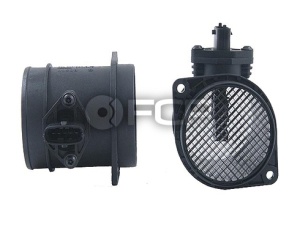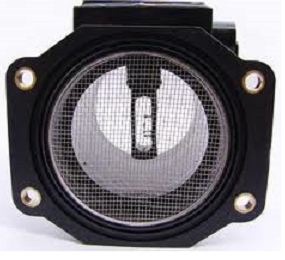- 05/02/2014
- 1 Min Read
- By: Alan Power
Bad MAF Sensor? Overview, Symptoms, & Troubleshooting
Mass Air Flow (MAF or Air Mass Meter) sensors are often overlooked when doing your routine maintenance schedule or a general service. This little sensor is usually housed in the intake hose duct or body between the fuel injection body and the air filter box. The MAF sensor monitors the amount of air entering the engine and in my experience it is a very reliable sensor that gives little trouble. To be precise it measures grams of air per second (g/s) flowing through into the engine. The sensor is part of the electronic system that is monitored by the Vehicles ECU that ensures proper fuel ratios for any given throttle position and load, (I.e. power requirement by the driver).
There are a couple of different types of MAF, the basic types are hot-wire and hot-film. There are other types of airflow sensors such as VAF, vane airflow type but the most common in vehicles such as BMW, Volvo and Mini’s and other euro cars is the heated element type. They typically have four wires in the MAF only sensor, but if the sensor incorporates the intake air temperature (IAT) it will have six wires.
The theory behind the functionality of the sensor is that any given conductor provides less resistance at cooler temperatures and more resistance as the conductor heats up. The sensor element (i.e. the conductor) in your MAF is heated to a pre-set temperature above ambient temperature - this is one of the reasons that intake air temperature is measured. As the air passes through the duct into the engine it rushes past the sensor and this has a cooling effect on the wire. To maintain the pre-set temperature of the wire the current increases, that current change is directly in proportion to the mass of the air flow; the hot film sensors use the same physics in operation, but use a foil grid instead of a platinum wire.
Symptoms for a faulty MAF are: MIL/Check light on, hesitation, sluggishness, stalling at traffic lights, stop signs etc and rough or uneven idling. Gas mileage will also suffer with MAF malfunction and possibly black, sooty smoke from the tailpipe. Drivers often think that an ignition problem is present such as, a spark plug which has started to fail, or fault ignition coil or coil pack or secondary ignition wires, because the symptoms can manifest quite similarly. The fault can be a bit tricky to pinpoint to the MAF because unplugging the MAF sensor may not cause a noticeable difference in the rough idling.
If you are using an OBD-II trouble code it will often be P0100 through to P0104, however, other codes may be triggered such as rich and lean codes P0170, P0171 & P0172. Sometimes no codes will be triggered, especially in the early phases of the fault, but MAF can still be the reason for the uneven idling or hesitation.
For diagnosis and regular maintenance check for loose or broken wiring harness, and/or connections and remove for a visual check. Some manufacturers use a self-cleaning system whereby the element is briefly heated after engine shut-off to many hundreds of degrees. This is to burn off any accumulation of dirt and foreign material that may have found its way past the air filter and onto the sensor. But in some cases this doesn't "clean" the sensor.
The MAF is a replacement maintenance item and I usually replace around 50,000 miles, however, cleaning can often improve sensor functionality particularly when mileage is starting to creep up, therefore I also routinely clean the MAF as part of my annual maintenance. I have heard of many different types of cleaning methods including manually cleaning with probes of some kind and use of brake fluid - even diluted acid! But care needs to be taken as the sensors are easily damaged. Personally I never physically interfere with the sensors and only use cleaners that are designed specifically for the MAF. Maintenance is easy, simply disconnect and remove the sensor and body from the car, spray the cleaning fluid as per directions. And allow at least a half hour to air dry – never use compressed air or other means to reduce drying time though.
I have heard that some oil type filter elements can result in contamination of the sensor, but I have never seen this, has anyone experienced contamination in this way?












